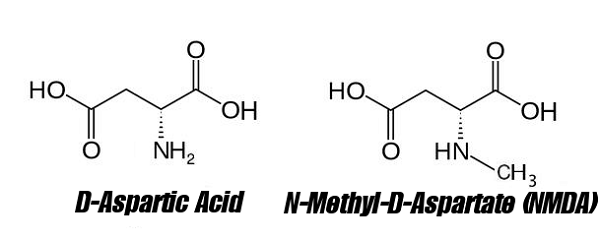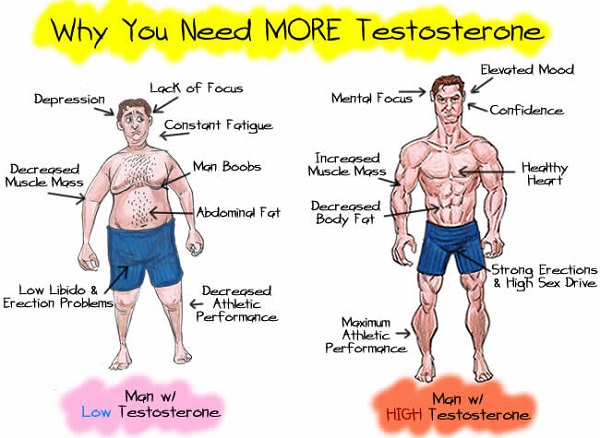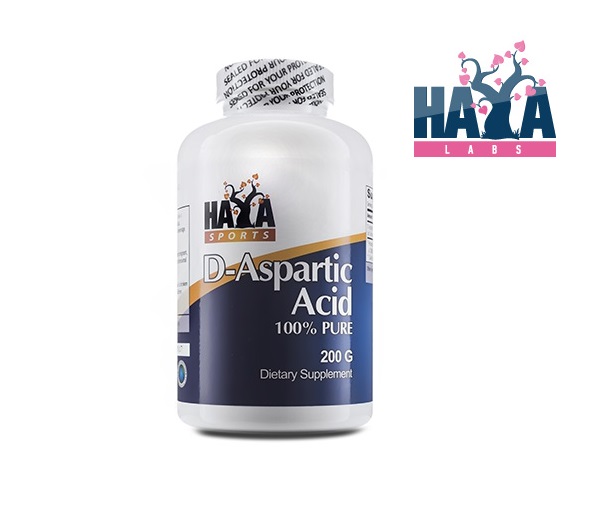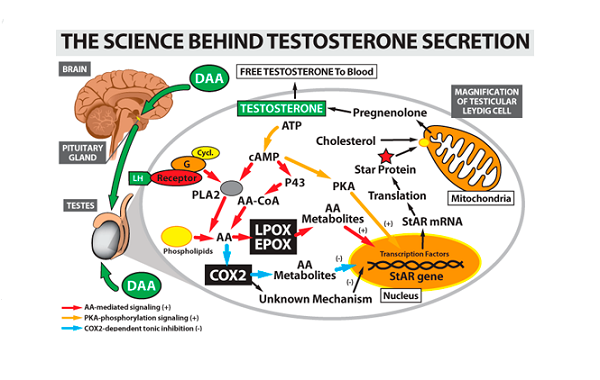
D-Aspartic Acid and all you need to know about it
3
2848

More testosterone? Why didn’t you just say so?
Well, you need to understand that it is more complex than that and something may go wrong. What exactly you might ask. The NMDA receptors within the brain are in charge of a delicate activity in the human behavior, the operant conditioning namely. This is a process which allows us, humans, to adapt to changes in the surrounding environment spontaneously.

What is D-aspartic acid (DAA)?
D-aspartic, is an amino acid, a racemate isomer of l-aspartic. Aspartate makes the carboxylate ions, salts, and esters of the acid.
The left form of the amino acid is one of the 20 proteinogenic amino acids present in nearly all of the proteins, human body included.

What should you know about DAA?
The right or the ‘D’ form is synthesized in the N-methyl-D-aspartate (NMDA), a substance which stimulates the NMDA receptors in the brain much in the spirits of the glutamate (monosodium glutamate) effect but to a lesser degree.
What is unique to the NMDA receptors is that they are connected to the synaptic plasticity of the brain as they are connected to learning and retrieving the ‘emotional response’ occurring during a positive result or a good quality adaptation.
The disadvantage to the NMDA receptors is that the overexcitement leads to their destruction while the D-aspartate similarly to the glutamate leads to excitotoxicity.

What is it used for and what are its health benefits?
D-aspartic acid and its analogs, D-sodium aspartate and N-methyl-D-aspartate bear the functions of neurotransmitters and neuromodulators.
read more
DAA is linked to hormone regulation in the endocrine system. It increases the levels of the luteinizing hormone, the gonadotropin hormone and the hormone stimulating folliculin. It also stimulates the production of enzymes which in turn stimulate their own testosterone production.

How does DAA work?
D-sodium aspartate is known to increase the levels of two secondary signal proteins: cAMP and cGMP.
cAMP is secreted in the testicles, the Leydig cells where it stimulates the production of their own testosterone and progesterone which marks a 30% rise;
cGMP is secreted in the hypophysis and leads to a rise in the production of luteinizing hormone, prolactin, and the growth hormone.
D-aspartic acid encourages the gonadotropin releasing hormone and oxytocin as well as vasopressin synthesis of mRNA.
The manner in which D-aspartame works in the different cells is the following, it leads to synthesis/activation of the critical proteins which have signal and enzyme functions. Proteins which fall into this category are StAR, cAMP, cGMP.
A problem which arises with the rise of testosterone level is the enzyme aromatase. It transforms the excess amounts of testosterone into estrogen. This means that an independent intake of D-aspartate in the absence of aromatase blockers would be for naught.
The intake of the amino acid in itself seems to lead to a rise in the aromatase production.

Proven benefits with people:
- Increases the production of testosterone and luteinizing hormone.
- Leads to a rise in the synthesis of aromatase due to an increase in the testosterone levels and direct stimulation by the D-aspartic in separate in vitro trials.
Unproven benefits:
- A stable increase in the testosterone levels samples taken 3 days after discontinued use show a decrease which means that the aromatase has done its job.
- Are there any proven side effects and notes of caution to be considered with DAA intake?
- D-aspartic and its chemical analogs are oxytocin similar to monosodium glutamate (MSG) and aspartame (E951) because they use a common course of action, overstimulation of the NMDA receptors.
Who should avoid taking DAA or any harmful combinations?
D-aspargine acid shouldn’t be consumed by pregnant or lactating women, breastfed babies, children, and adolescents.
The risk of excitotoxicity rises proportionally to the amounts of the used toxic agent and proportionally to the age of the people who use it.
It is not recommended for use by people who suffer from neurodegenerative diseases or are prone to developing such.
More testosterone? Why not! Try DAA!.




